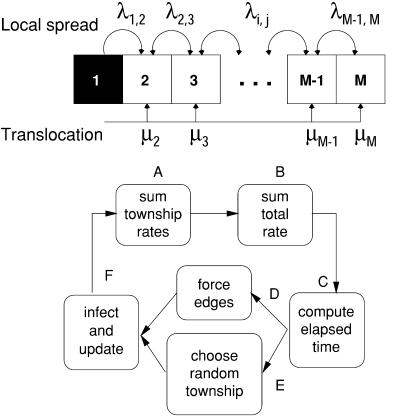Figure 2.
A stochastic model was used to simulate the heterogeneous spread of raccoon rabies on an irregular network, illustrated here on a simple array. An infected township, i, infects its adjacent neighbor, j, at a rate λi,j. In addition, a township, j, may become infected because of translocation of rabid raccoons at a rate μj. Heterogeneity was incorporated by allowing the local rates from the neighbors, {λi,j}, and the rate of translocation, {μj}, to be different, possibly unique in different models. Each algorithm for associating a set of rates with rivers or human population density defines a stochastic candidate model. The simulation algorithm involved six steps. (A) For each township, add the rates from all possible routes of infection. (B) Add the township rates to compute a total rate. (C) Draw a random number to determine the elapsed time. (D) Check to see if any of the edges had become infected in the elapsed interval. (E) If no edges were forced, select a random township to infect. (F) Infect the forced edge or the infected township, update the local rates, and repeat until each township becomes infected.

